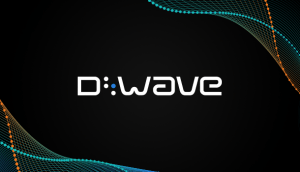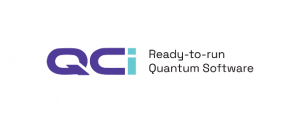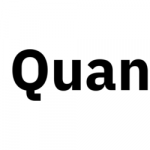Quantum News Briefs July 20: VINCI Energies and QuantumBasel launch a pilot project with D-Wave’s quantum technology; QCi unveils quantum photonic vibrometer for remote sensing; SEEQC System Red successfully runs HQS Quantum Simulations algorithm + MORE

Quantum News Briefs July 20:
VINCI Energies and QuantumBasel launch a pilot project with D-Wave’s quantum technology

QuantumBasel, Switzerland’s first quantum hub for commercial use embedded in the uptown Basel innovation campus, has launched a quantum pilot project with VINCI Energies, an accelerator of environmental and digital transition.Quantum News Briefs summarizes the announcement on the D-Wave site.
With D-Wave as its technology partner, QuantumBasel and VINCI Energies will work on the research and development of a series of quantum-hybrid applications.
One of the many challenges faced when constructing a building is the design of the heating, ventilation, and air conditioning (HVAC) system. One of the last steps in the HVAC design process is called “network generation” . This step ensures that all HVAC elements are correctly connected while complying with safety and sustainability requirements. While this step is of crucial importance it is also a step that is computationally very expensive or even prohibitive.
To tackle this computational bottleneck, VINCI Energies has developed a data-driven approach under their AI initiatives supported by VINCI’s Leonard innovation program. This approach dramatically reduces compute time and subsequent manual adjustments. However, the network generation problem falls into a category of combinatorial optimization problems that scale very badly on conventional devices such as CPUs or GPUs.
Quantum computing approaches have the potential to solve certain combinatorial optimization problems more efficiently than purely conventional approaches. This is why VINCI Energies has started a collaboration with uptownBasel and D-Wave to investigate if / when / how they can further improve the quality (shorter compute time and lower costs) of the generated HVAC network solutions.
VINCI Energies’ quantum proof of concept is divided into two phases: The problem formulation phase followed by the implementation and experimentation phase. During the current problem formulation phase, they have been translating the HVAC network generation problem into a well-defined form that D-Wave’s hybrid systems can understand. This has required several iterations between VINCI Energies´ HVAC subject matter experts and D-Wave’s quantum code developers to derive and investigate several representative model formulations. In addition, the team has prepared and adjusted multiple HVAC data sets and chosen tailored model evaluation and business metrics to later optimize and quantify the quality of the inferred HVAC network solutions. Click here to read the announcement in-entirety on D-Wave site.
QCi unveils quantum photonic vibrometer for remote sensing
 Quantum Computing Inc. (QCi) announced on July 19 the release of its first-in-a-series Quantum Photonic Vibrometer (QPV), a proprietary, powerful instrument for remote vibration detection, sensing, and inspection. Quantum News summarizes the announcement.
Quantum Computing Inc. (QCi) announced on July 19 the release of its first-in-a-series Quantum Photonic Vibrometer (QPV), a proprietary, powerful instrument for remote vibration detection, sensing, and inspection. Quantum News summarizes the announcement.
This device is the first quantum accelerated photonics vibrometer available in the market today and offers significant advancements in sensitivity, speed, and resolution, capable of discerning for the first time, highly obscured and non-line-of-sight objects.
Military and commercial applications are numerous in the areas of material recognition, enhanced surveillance, infrastructure integrity and preventive industrial maintenance – all at safe distances and requiring minimal energy/optical power. Beginning today, QCi is accepting orders.
The Quantum Photonic Vibrometer is a proprietary, first of its kind system to leverage the power of single-photon detection to offer significant benefits over current vibrometer systems and applications available today. The first version of the QPV measures the vibration frequency of a remote target by utilizing fast-gated single photon counting to directly detect returning photons whose wavefunctions are dynamically modulated as they are reflected off the target. This is in contrast to optical coherence tomograph or related methods. The QPV eliminates background noise and isolates the specific characteristics of a target object, enables the system to interrogate the material properties of a target at various depths and can provide both surface characteristics as well as volumetric information.
The QPV is much faster and more sensitive than other vibrometers currently available. It collects and delivers significantly more data and distinguishing characteristics on each target, such as material type or specific metal, distance and altitude, volume or size of the target, reconstruction of a voice or sound, as well as detection and tracking anomalies. This level of information accuracy and detail can advance military, commercial and humanitarian applications in several known challenged areas today, including remote landmine detection, audio surveillance and remote voice retrieval, archeological mapping, material recognition from specific metals to plastics, metal fatigue and structural integrity of bridges, buildings, power plants, airplanes, and transportation fleets. Click here to read complete announcement on QCI website.
SEEQC System Red successfully runs HQS Quantum Simulations algorithm
 SEEQC today announced July 19 with HQS Quantum Simulations that it has successfully run an algorithm on its SEEQC System Red, the company’s full-stack quantum computing system, that shows great potential to achieve commercially useful quantum advantage in the near term. SEEQCs high quality system characterization has allowed HQS Quantum Simulations to test, for the first time on real hardware, their unique approach to perform quantum simulation on noisy quantum computers. This is an important third-party validation for SEEQC and a testament to the high quality and commercially stable performance of SEEQC Red’s platform — the company’s first-generation reference class quantum computer system.
SEEQC today announced July 19 with HQS Quantum Simulations that it has successfully run an algorithm on its SEEQC System Red, the company’s full-stack quantum computing system, that shows great potential to achieve commercially useful quantum advantage in the near term. SEEQCs high quality system characterization has allowed HQS Quantum Simulations to test, for the first time on real hardware, their unique approach to perform quantum simulation on noisy quantum computers. This is an important third-party validation for SEEQC and a testament to the high quality and commercially stable performance of SEEQC Red’s platform — the company’s first-generation reference class quantum computer system.
HQS Quantum Simulations develops algorithms for quantum computers designed to accelerate commercial roadmaps in the chemistry and pharmaceutical industries. The algorithm HQS developed, once scaled has the potential to deliver quantum advantage for commercial simulations in a range of industries.
The most promising application for quantum computers is the calculation of properties of materials and molecules. SEEQC provides the fastest gate speeds available which makes it ideal for the calculation of material properties,” said Dr. Michael Marthaler, chief executive officer at HQS. “With additional integration of SEEQC’s SFQ logic chips with low latency control, readout and quantum-classical interfacing, the whole system will be even faster allowing for more results with unique precision”.
The architecture of SEEQC Red mimics current-generation superconductor quantum computing systems with conventional room temperature analog control and readout. The SEEQC Red architecture was optimized to achieve industry leading 2-qubit gate speeds, and the company has achieved this with average 2-qubit gate speeds of 39ns and average gate fidelities of 98.4%, among the best publicly available quantum systems operating over the cloud. Click here to read announcement in-entirety.
One of Japan’s three megabanks bets on quantum computing
 Tom Fries of 24/7 Wall Street reported that MUFG Bank, one of the three megabanks in Japan, reportedly invested billions of yen to buy a 18% stake in Groovenauts, a quantum computing startup. Quantum News Briefs summarizes the article.
Tom Fries of 24/7 Wall Street reported that MUFG Bank, one of the three megabanks in Japan, reportedly invested billions of yen to buy a 18% stake in Groovenauts, a quantum computing startup. Quantum News Briefs summarizes the article.
The investment makes MUFG the first among Japan’s three largest banks to bet on quantum technology and attempt to leverage it for financial services. MUFG Bank’s investment in Groovenauts underscores the growing interest in quantum technology, which can potentially disrupt numerous industries, including finance. The Tokyo, Japan-based bank seeks to gain a competitive edge in the banking sector through this bet.
MUFG Bank, the largest bank in Japan and one of the biggest in the world, has invested in Groovenauts, a local startup that develops advanced quantum technology solutions. Through the investment, MUFG seeks to utilize Groovenauts’ quantum tech offerings to improve its financial services.
Specifically, MUFG will use the technology for complex transactions associated with derivatives trading and risk management and boost its operational efficiency. Groovenauts provides computing services via a technique known as “quantum annealing,” which is meant to identify the optimal answer from many combinations.
MUFG acquired an 18% stake in Groovenauts for several billion yen, making the startup the bank’s equity-method affiliate. The move marks the first direct investment in a quantum computing company among Japan’s three megabanks. Click here to read article in-entirety.
Sandra K. Helsel, Ph.D. has been researching and reporting on frontier technologies since 1990. She has her Ph.D. from the University of Arizona.

























